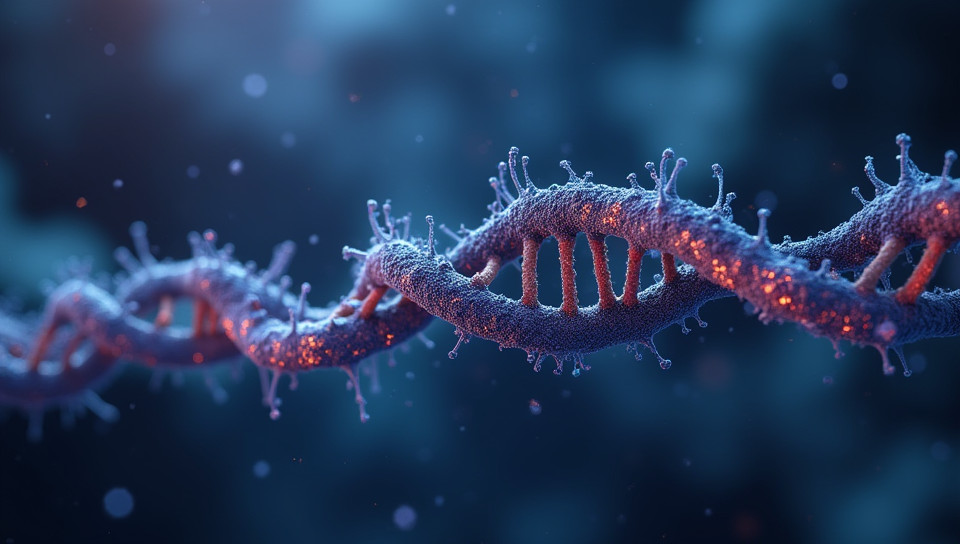The CRISPR-Cas9 system offers precise control over genome modifications 80%

The Future of Genetics: Unlocking Precision with CRISPR-Cas9
Imagine being able to edit any part of the human genome with precision and accuracy, revolutionizing the treatment of genetic diseases and opening doors to new avenues of scientific discovery. This is precisely what the CRISPR-Cas9 system has made possible, offering a powerful tool for modifying genes in living organisms.
What is CRISPR-Cas9?
CRISPR-Cas9 is a revolutionary gene editing technology that allows scientists to edit DNA with unprecedented precision and ease. Developed from a natural defense mechanism found in bacteria, CRISPR (Clustered Regularly Interspaced Short Palindromic Repeats) uses an enzyme called Cas9 to locate and cut specific sequences of DNA.
How Does it Work?
The process is relatively straightforward:
- Scientists identify the gene they want to edit and design a guide RNA (gRNA) that matches the target sequence.
- The gRNA is programmed with the desired editing instructions, which are then delivered to the cell along with the Cas9 enzyme.
- The Cas9 enzyme locates the target DNA sequence and makes a precise cut, allowing scientists to introduce new genetic material or repair existing mutations.
Applications of CRISPR-Cas9
The possibilities for CRISPR-Cas9 are vast and varied:
- Treating genetic diseases by correcting or removing disease-causing genes
- Understanding gene function and regulation through targeted disruption or modification
- Developing new therapies, such as cancer treatments that target specific genetic mutations
- Improving crop yields and resistance to pests and diseases in agriculture
- Advancing synthetic biology applications
Challenges and Future Directions
While CRISPR-Cas9 has opened doors to unprecedented possibilities, challenges remain:
- Ensuring precision and avoiding off-target effects
- Overcoming issues with gene expression and stability
- Addressing ethical concerns surrounding the use of gene editing technology
Despite these challenges, researchers continue to refine and improve the CRISPR-Cas9 system, pushing the boundaries of what is possible in genetics and biotechnology.
Conclusion
The CRISPR-Cas9 system represents a major breakthrough in our ability to modify genes with precision. As scientists continue to explore its potential, we can expect significant advances in disease treatment, crop improvement, and synthetic biology applications. While challenges remain, the possibilities offered by this technology are too great to ignore, and its impact will be felt for generations to come.
- Created by: Sofia Gajdoš
- Created at: Jan. 13, 2025, 12:12 p.m.
- ID: 17700







